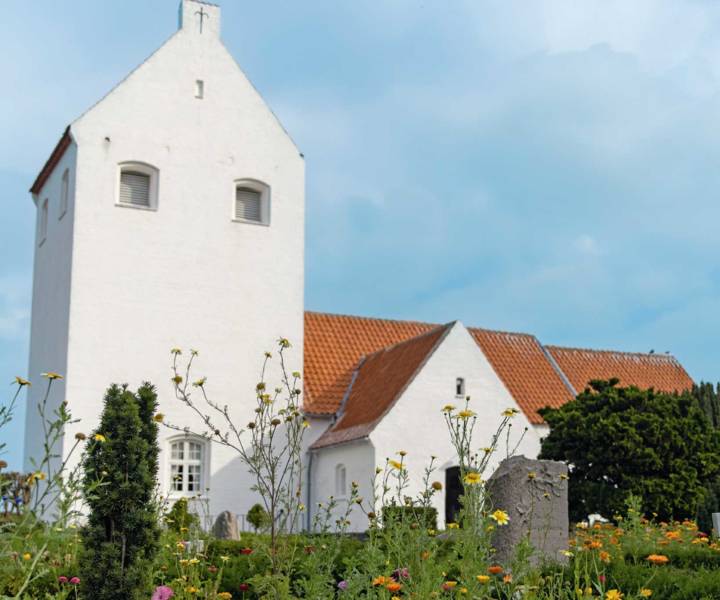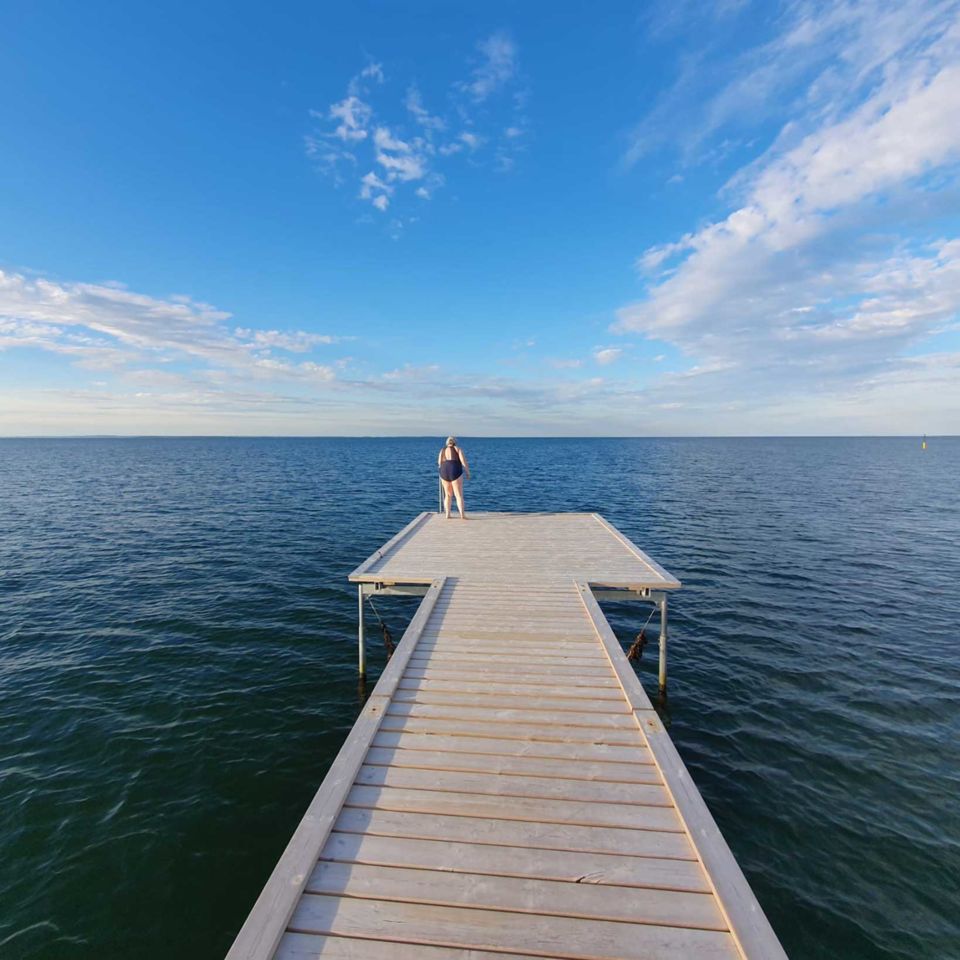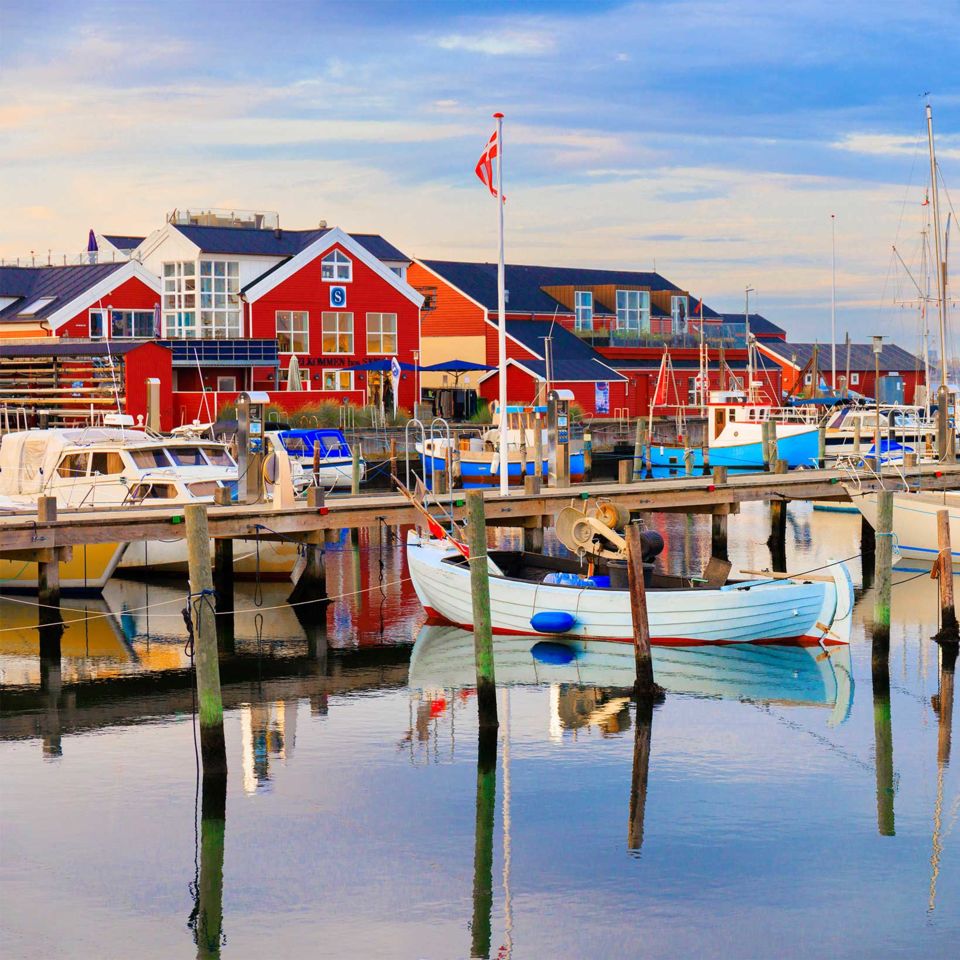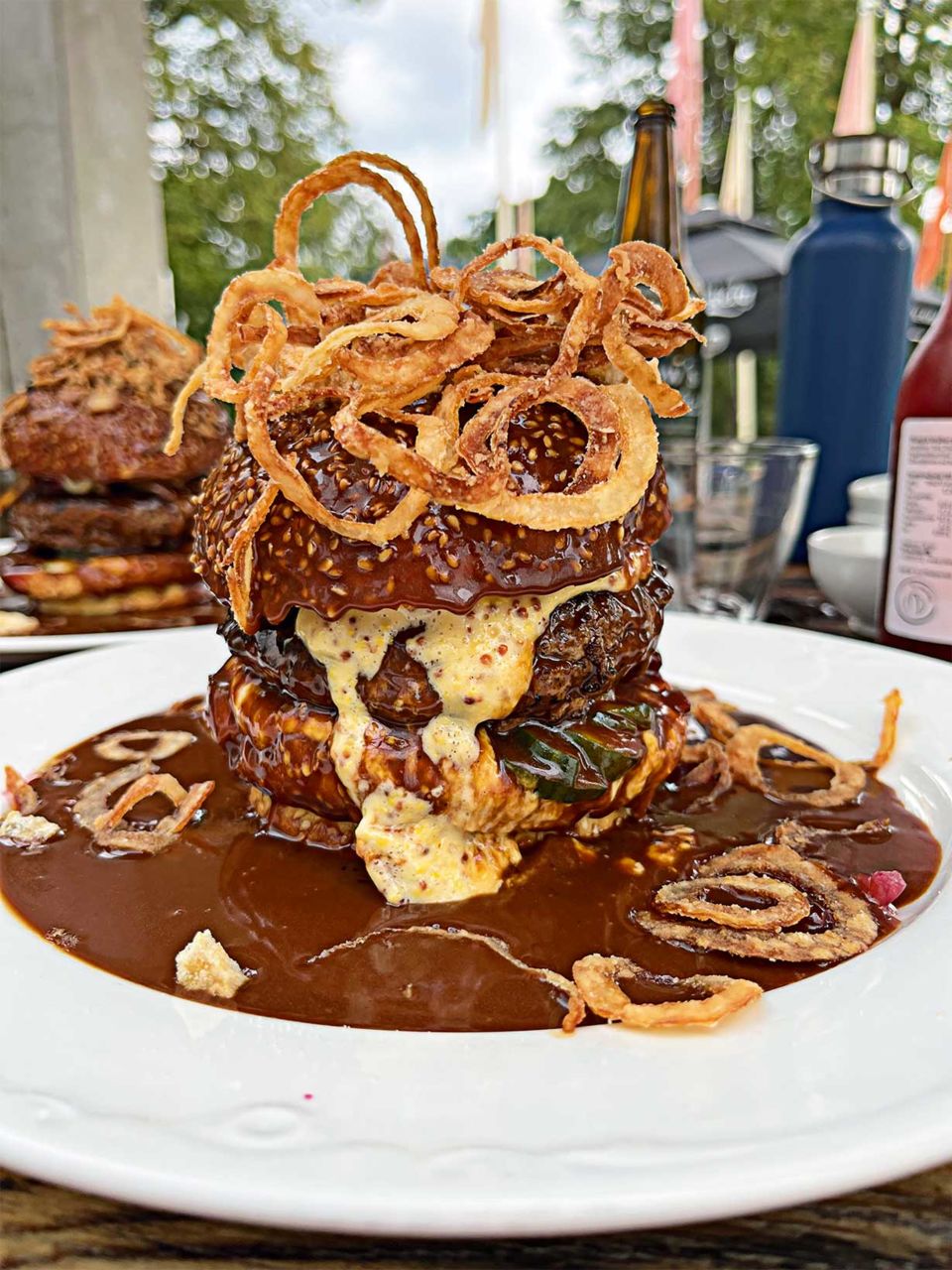Travel
Travel review: Denmark
by Tamsin Burnett-Hall

Danish by design: Tamsin Burnett-Hall slows down to explore Denmark’s coastland area and archipelago.
There’s an appeal to the Nordic countries that’s both wholesome and slightly ethereal. It’s an atmosphere of long, lightfilled summer days spent largely outdoors, contrasted with winter cosiness and thick woolly jumpers, as epitomised by Danish hygge. My fascination started with childhood books, from Hans Christian Andersen’s fairy tales to the enchanting Finnish Moomins. Discovering Carl Larsson’s watercolours introduced an idyllic Scandinavian aesthetic of indoor-outdoor family living (and communal eating around long tables), well before the likes of Habitat and IKEA made modern Scandi interiors attainable. And then there is the focus in society on family life and style of education, all of which adds up to a strong spiritual draw.
I don’t know why it took me quite so long to visit and investigate whether reality could match my perception. Deciding on Denmark for our first Nordic trip, my partner Pam and I head for the Kystlandet (coastland) region on the Jutland peninsula, which offers a blend of rural tranquillity and small city life, as well as 165 miles of coastline. Whether your interests lie in food, art, history, or outdoor activities on land or water, you’ll find more than enough to keep you entertained, and what’s better, all this variety is contained in a relatively small geographic area, making it easy to explore.
We fly into Billund, a mere 90 minutes from London Stansted, and pick up our hire car. Driving straight past Legoland, we head for Horsens Fjord. While ‘fjord’ conjures up visions of steep-sided glacial sea valleys, here the term is used to denote a sea inlet – we’d call it an estuary or a firth – which opens up into the Kattegat Sea dividing Denmark and Sweden. For keen hikers or cyclists, the 35-mile Fjordmino trail winds around the edges of the fjord, and the foot- and bike-ferry (operating March to October) can be used to complete the loop, hopping across via the quaint islands of Alrø and Hjarnø.
On the southern side of the fjord lies the small harbour of Snaptun, where we catch the car ferry to Endelave, also known as Rabbit Island. This isn’t just a historical allusion, there really are thousands of wild rabbits here – far more of them than the mere 185 permanent human residents, although the island’s population rises rapidly in the summer months when city dwellers decamp to their summer cottages. As the island is a mere five square miles, we’ve only booked to stay one night in a B&B (in Denmark this means ‘bed and bath’ rather than ‘bed and breakfast’), since we expect that we can see all there is across two days. But we are smitten by the charms of Endelave with its old timber-framed houses and farmsteads, and could quite happily have stayed for a whole week, enjoying the slow pace of life as well as attractions such as the ‘seaweed safari’ and medicinal herb garden, and exploring the country lanes.
The only problem that we come across both here on the island and in other rural areas on the mainland is that small businesses and roadside stalls with tempting local offerings are often unstaffed and have a QR code sign to pay using the MobilePay app. This is unfortunately only usable if you have both a Danish mobile number and bank account, and therefore redundant for foreign visitors. So sadly the local economy doesn’t get as much business as it would have if there had been any other way for us to buy the local honey, flavoured sea salt and driftwood carvings.
HOP TO IT
Endelave is a nature-lover’s destination, and one of the key attractions is the Kanino, a 13-mile circular coastal route (kanin means rabbit, but the name is also a play on the Spanish ‘Camino de Santiago’ trail). The waymarked route bends its way through woodland, salt marshes, heathered flatlands and along beaches, offering countless wildlife-viewing opportunities (and regular water top-up points). It’s not long before we have to abandon our bunny-watching tally, seeing fields full of rabbits enjoying the peaceful surroundings.
Aching from our exertions, an evening sea plunge proves chilly but fabulously reviving before we head to our B&B. The simple cottage apartment is delightful, filled with repurposed items such as church pews draped with soft sheepskins, traditional stencilled wall cabinets and a classic Danish leather recliner. Next morning, hosts Mette and Jørgen invite us for breakfast – porridge with wild berries, boiled eggs, rye bread, cold meats and cheese – and their fascinating stories. Jørgen holds multiple positions of responsibility on the island, from harbour master to police and emergency paramedic; when off-duty he assists Mette with her popular Icelandic horse-riding business.

Back on the mainland, we take a detour to the pretty harbour town of Juelsminde and enjoy a late lunch at restaurant Møllers, famous for its range of freshly prepared smørrebrød – open sandwiches piled high with cold or hot toppings. My favourite is the ‘sea star’, with a fried fish fillet, shrimps, remoulade and lemon, but it’s almost impossible to eat elegantly even with cutlery.
After our island idyll, it’s time for metropolitan culture in the city of Horsens, which has a pedestrianised historical centre and the charm of a small town. Hidden behind a gate in a cobble-stoned street lies the 1734-built Bødkergården (the cooper’s garden), where the local cooper made wooden casks and barrels for more than 200 years. We are staying in one of two rental houses in the flower-filled courtyard. The golden-yellow half-timbered house is a peaceful oasis in the middle of urban life, and is as charming inside as out. One of the secrets of successful Scandi interiors seems to be the avoidance of ‘The Big Central Light’ – instead multiple lamps create pools of illumination, with low-hanging pendants over focal spots such as the kitchen worktop. Another notable northern European habit is the deployment of two single duvets on a double bed; such a sensible idea, as there’s ample coverage and no fighting over who has the lion’s share. Even though ornaments perch on beams and shelves, nothing feels cluttered; it all comes together simply.
Our first day in Horsens is for history, the second for culture. FÆNGSLET is the former Horsens state penitentiary, and the largest prison museum in Europe. It was in use from 1853 until 2006, and now interactive exhibits share the stories of those who were detained at, and escaped from, the prison over the years. In the 1990s, separate areas were allocated to prisoners from rival biker gangs, each with common rooms that had their own cooking facilities, to engender a more homely (and crucially, less combative) environment. Another moving exhibit featured the voices of prisoners’ children, such as a young boy who walked past the prison every day on his way to and from school, knowing his father was serving time inside. Thought-provoking stuff indeed.
After the light relief of some retail therapy, we have dinner at Dollys, a restaurant by the old harbour that has been family-run for three generations. Traditional Danish food is hearty and meat-focused; the most popular dish is crispy fried pork belly with potatoes and parsley sauce.

STYLE AND SNACKS
Culture day kicks off with a stroll around the city centre, investigating the street art and murals – there’s a handy guide map available from tourist info points. From street art to gallery, next stop is Horsens Art Museum, a centre of contemporary Danish art set in a park populated with sculptures. On the museum terrace, organic Café Ella is an excellent spot for coffee, cake or lunch. It’s renowned for its award-winning bøfsandwich, a towering construction of beef patties, mustard mayo, cheese and pickles in a bun, crowned with crispy onions and smothered in a rich gravy-like brown sauce. Truly the best burger I’ve ever had (and probably the largest!).
By now, we’ve fully embraced the mode of ‘slow travel’, so rather than heading north to the city of Aarhus (one of Denmark’s ‘big four’), we stay off the beaten track and go rural, to explore the countryside around Odder. Close to Odder lies the farm shop mecca of Fru Møllers Mølleri (see ‘best bites’, right), a family-run business that essentially translates as ‘Mrs Miller’s Mill’. Established by owner Bodil to connect people to how their food is produced, the farm has expanded from the original mill that still grinds grain for the baker into a must-visit bustling multistrand agri-business. Visit the animals, shop at the bakery, the butcher or the craft stalls in the old workshed, or enjoy an ice cream or a meal at the restaurant – or all of the above, as we do! We spend almost a whole day here and leave laden down with goodies. Luckily we’re staying just up the road at Bjerager B&B, where we can enjoy our purchases over the next couple of days. This stylish apartment is attached to artist Lone Arp’s home-studio, stylish and compact yet cleverly laid out with furniture and storage built in to make the most of the space. Møffe the cat wanders in and out, as we leave the doors to the back deck open to enjoy the fresh air and the view of the cutting flower garden, fields and church beyond.
Hiring ebikes, we explore the Nature Path Horsens-Silkeborg, along a former railway line that was known as the most beautiful stretch in Denmark. Today it’s a popular route for cyclists, hikers and horse-riders, as it follows the river Gudenå, crossing it in several places and winding through the Danish lakelands and gently rolling hills of the Bakkelandet. You must not miss ‘The Uncovered Bridge’ across the river, which got hidden and (almost) forgotten inside a dam for 85 years! Now dug free and restored to its former glory, it’s a popular attraction and picnicking spot. If you’re a train geek, a three-mile-long stretch of track has also been restored by enthusiasts, with vintage trains running from Bryrup to Vrads, where there’s a charming restaurant formed of old carriages.
Has Denmark delivered what I hoped? I certainly felt at home, and have been learning Danish since I got back, so I’d say it’s a resounding ja (yes) – and more!
THREE BEST BITES
1 Below the 18th-century Jørgensens Hotel in Horsens lies Restaurant Eydes. The chef blends modern Danish with French gastronomy – such as Danish beef with pickled redcurrants – divine!
2 For a non Danish experience, Vecchio Convento is a fine-dining Italian in Odder. The chef is from Emilia-Romagna (his Danish wife runs the deli) and profits support the home village back in Italy.
3 A trip to foodie wonderland Fru Møllers Mølleri should be part of any visit to the Kystlandet area. The restaurant serves fabulous brunches and smørrebrød, using ingredients from their own farm.
HOW TO BOOK
Flights from London Stansted to Billund cost from £30 return; car hire costs from around £25 per day. Varied accommodation options can be found via kystlandet.com See also visitdenmark.com
Prebook the ferry from Snaptun to Endelave at endelave-ferry.teambooking.dk (around £35 return with car)













